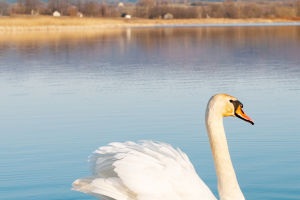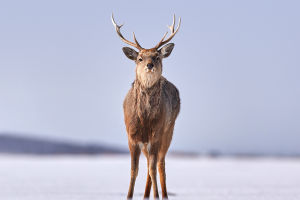Antelopes are a diverse group of artiodactyl bovids, consisting of approximately more than 100 species, belonging to 11 families and 32 genera.
Despite their name, antelopes do not refer to a specific family or genus for taxonomy. Antelopes are characterized by their hollow and strong horns, which distinguish them from ruminants such as cattle and sheep.
Physical Characteristics of Antelopes
Antelopes are known for their grace, agility, and alertness. They have slender limbs, and small and sharp hooves, and come in a variety of sizes.
The height of antelopes ranges from 60 to 90 centimeters, and they often gather in groups of 5 to 10, with some groups consisting of hundreds of individuals. Antelopes are found in various habitats, including grasslands, wilderness areas, deserts, and mountains.
Common Antelope Species
1.Tibetan Antelope
The Tibetan antelope is the largest in the world and inhabits high-altitude mountainous regions. They have a body length of 135 cm, a shoulder height of 80 cm, and a weight of 45-60 kg.
Males have long and straight black horns, while females have no horns. They have thick and dense light brown fur.
2. Gemsbok
The gemsbok is one of the largest bovids in Africa, with males weighing over 900 kilograms, which is larger than ordinary livestock cattle. The male gemsbok is large and strong, with a thick wattle under the neck.
3. Longhorn antelope
The Longhorn antelope, a member of the antelope subfamily, is known for its exaggerated long horns, which are frightening weapons whether they are fighting with each other or defending against natural enemies. Both sexes of this type of antelope have long horns that resemble swords.
4. Mountain Antelope
Mountain antelopes inhabit high mountain regions, including the Himalayas and the Alps. They have short bodies, with a body length of about 1 meter and a weight of about 20 kilograms.
They have very strong hind legs and hooves, which allow them to run quickly on rugged mountain terrain. They are very good at climbing and jumping and can move freely between rocks and cliffs.
5. Short-horned Antelope
The short-horned antelope is a small antelope species, with a body length of only about 1 meter and a weight of fewer than 20 kilograms. They are mainly distributed in the dry grassland areas of sub-Saharan Africa.
The short-horned antelope is a very drought-tolerant animal, capable of surviving in dry conditions. They have very short horns and necks and can move freely through low grass. The short-horned antelope is a beautiful sight on the African savannah and one of the popular destinations for tourists.
Reproduction and Maturity
Antelopes typically mate in autumn and winter, and females usually give birth to one or two lambs. The lambs stay with the ewe after birth, and they become independent after a few months and reach sexual maturity around a year old.
Antelopes are a diverse and graceful group of artiodactyl bovids that inhabit various habitats around the world. They are known for their agility, alertness, and unique physical characteristics, such as their hollow and strong horns.
With over 100 species, each with its distinctive features and habitats, antelopes remain an interesting and exciting group of animals to learn about.


